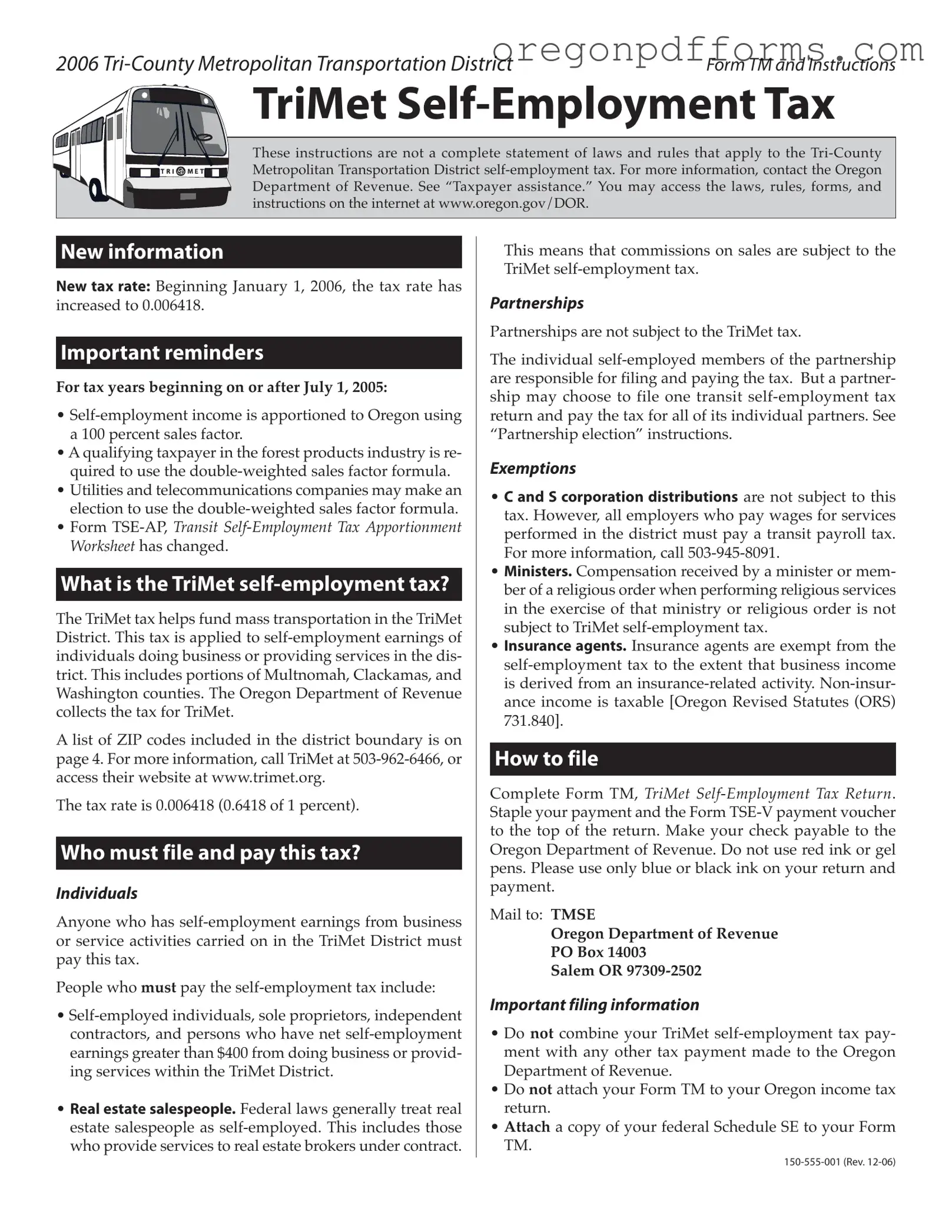What is the TriMet self-employment tax?
The TriMet self-employment tax is a tax that helps fund mass transportation services in the TriMet District, which includes parts of Multnomah, Clackamas, and Washington counties. If you earn self-employment income from business activities or services in this district, you are required to pay this tax. The current tax rate is 0.006418, or 0.6418 percent of your self-employment earnings. The Oregon Department of Revenue collects this tax on behalf of TriMet.
Who must file and pay this tax?
Anyone with self-employment earnings from business or service activities in the TriMet District must file and pay this tax. This includes:
-
Self-employed individuals, sole proprietors, and independent contractors with net earnings over $400.
-
Real estate salespeople, as federal law treats them as self-employed.
Partnerships do not pay the tax directly; instead, individual partners are responsible for filing and paying based on their share of earnings. Certain exemptions apply, such as for C and S corporation distributions and ministers performing religious services.
How do I file my TriMet self-employment tax return?
To file, complete Form TM, the TriMet Self-Employment Tax Return. You must attach your payment and Form TSE-V payment voucher to the top of your return. Use blue or black ink, and mail your return to the Oregon Department of Revenue. Remember, do not combine this payment with any other tax payments. Make sure to attach a copy of your federal Schedule SE and, if applicable, Form TSE-AP for apportioning your earnings.
Can I file a joint return with my spouse?
No, each taxpayer with self-employment earnings must file a separate Form TM. This rule applies even if you and your spouse filed a joint federal income tax return. The only exception is for partnerships, which can file one return for all partners.
Can I file my transit self-employment tax return electronically?
No, electronic filing is not an option for the TriMet self-employment tax return. You must print your return, make a copy for your records, and mail it to the Oregon Department of Revenue.
What should I do if I need to amend my return?
If you need to make corrections to your original return, you can file an amended transit self-employment tax return. Generally, you have three years from the due date or the date you filed the original return to do this. Make sure to check the box indicating that it is an amended return and provide an explanation of the changes.
What if I conduct business both inside and outside the TriMet District?
If your business activities span both areas, you will need to apportion your self-employment income using Form TSE-AP. The income is apportioned based on a 100 percent sales factor. If you qualify in the forest products industry, a double-weighted sales factor formula is required.
What happens if I miss the payment deadline?
For additional information, you can visit the Oregon Department of Revenue's website at www.oregon.gov/DOR or call their office at 503-378-4988. They also provide assistance in Spanish and have resources for individuals with disabilities.
